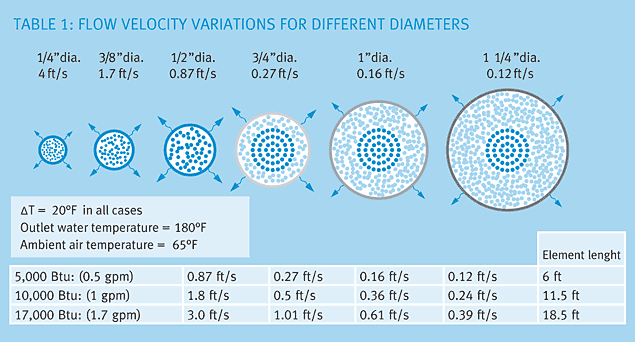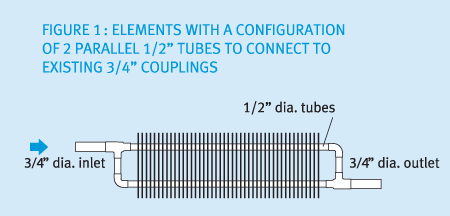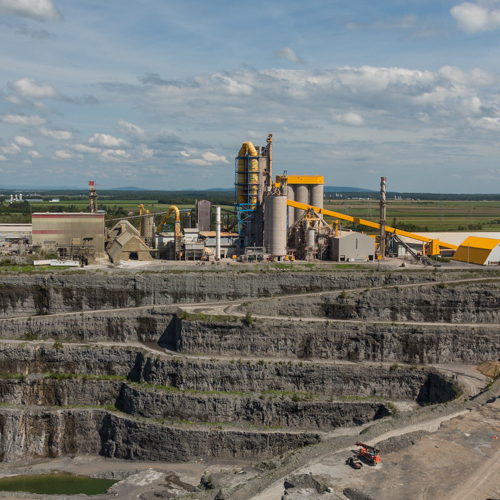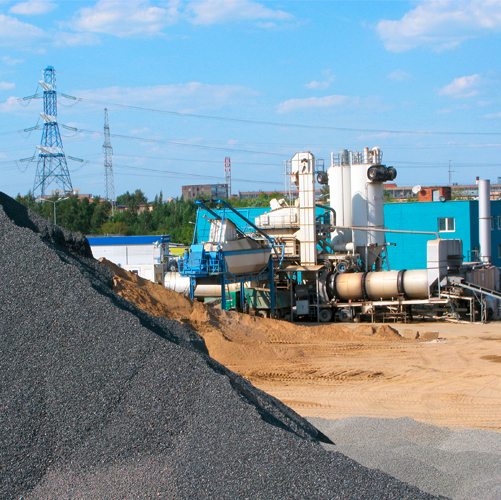Energy performance is a core concern for designers, and choos-ing efficient equipment, such as the condensation boiler, is often unavoidable. However, to achieve a level of energy efficiency com-mensurate with what this type of equipment can offer, it must be associated with a low temperature heating system that makes it possible to obtain the expected performance level or design a network with a high temperature differential to obtain a cold return.
When designing a heating system, selection of conventional heating elements can be summed up as choosing between 3/4˝, 1˝ and 1 1/8˝ diameter pipes. The design criteria require attention to the flow velocity in the pipe so that the flow remains turbulent, and thus maximize heat transfer.
With existing networks, the possibility of reducing the flow becomes more critical, the greater the diameter of the serpentine coil, because the laminar state can be reached faster. The arrival on the market of new serpentines producing high temperature differ-entials contributes to obtain a water return favouring condensation in the boilers. The new elements require much less flow to meet the demand and offer a high ∆T due to their exceptionally efficient performance. It is possible to achieve a ∆T as high as 47°F with certain configurations using 1/2˝ tubes. To obtain a lower return temperature to a boiler, the reduction of the flow within the existing elements often seems to be an
easy solution.
In general, in a classic tube, the flow is definitely laminar when the velocity is lower than about 0.25 ft/s. It remains laminar or becomes transient at different speeds ranging from 0.26 to 0.49 ft/s depending on the diameter. The turbulent state is secured above 0.5 ft/s. Table 1 shows the impact of variation in flow velocity on the flow. It emerges that 1˝ and 1 1/4˝ diameters significantly underperformed in the presence of a flow ranging between 0.5 usgpm and 1.0 usgpm. Smaller tubes remained turbulent in the three cases. Use of a large-diameter tube thus is not interesting when a higher ∆T is sought to improve a condensation boiler’s performance, despite excellent flow control at the serpentine inlets. It is then necessary to consider replacing the old elements or adding new ones, offering high ∆T, elsewhere on the system, lowering the return temperature enough to allow condensation. Since most of the existing systems have 3/4˝ pipe diameters to feed the serpentines, a new -serpentine configuration designed with two 1/2˝ tubes can then be used (see Figure 1).
Other configurations to meet the needs for greater capacities can be considered (four 1/2˝ tubes with a single 3⁄4˝ coupling at the outlet and at the inlet). For extreme applications, the use of 3/8˝ tubes allows even higher ∆T to be achieved with a three-pass serpentine configuration.
The new serpentines using 1/2˝ and 3/8˝ tubes have many advantages compared to classical elements. They thus become very interesting to optimize condensation boiler performance and obtain significant heating capacities even with hot water at low temperatures around 100 to 120°F. They allow high ∆T, thanks to their constantly turbulent flow, which optimizes the system’s performance while consuming less energy than a conventional system. Retention of a high ∆T favours better boiler performance. It can also exploit the full performance of a smaller boiler when the project involves several small-capacity units instead of a single very high-power unit.
Marc Francoeur, Eng. CEM, LEED AP®, DATECH Group
Jocelyn Léger, Eng., LEED AP®
Regional Sales Manager for Rosemex Products. Based on an article published in IMB
Continue reading










